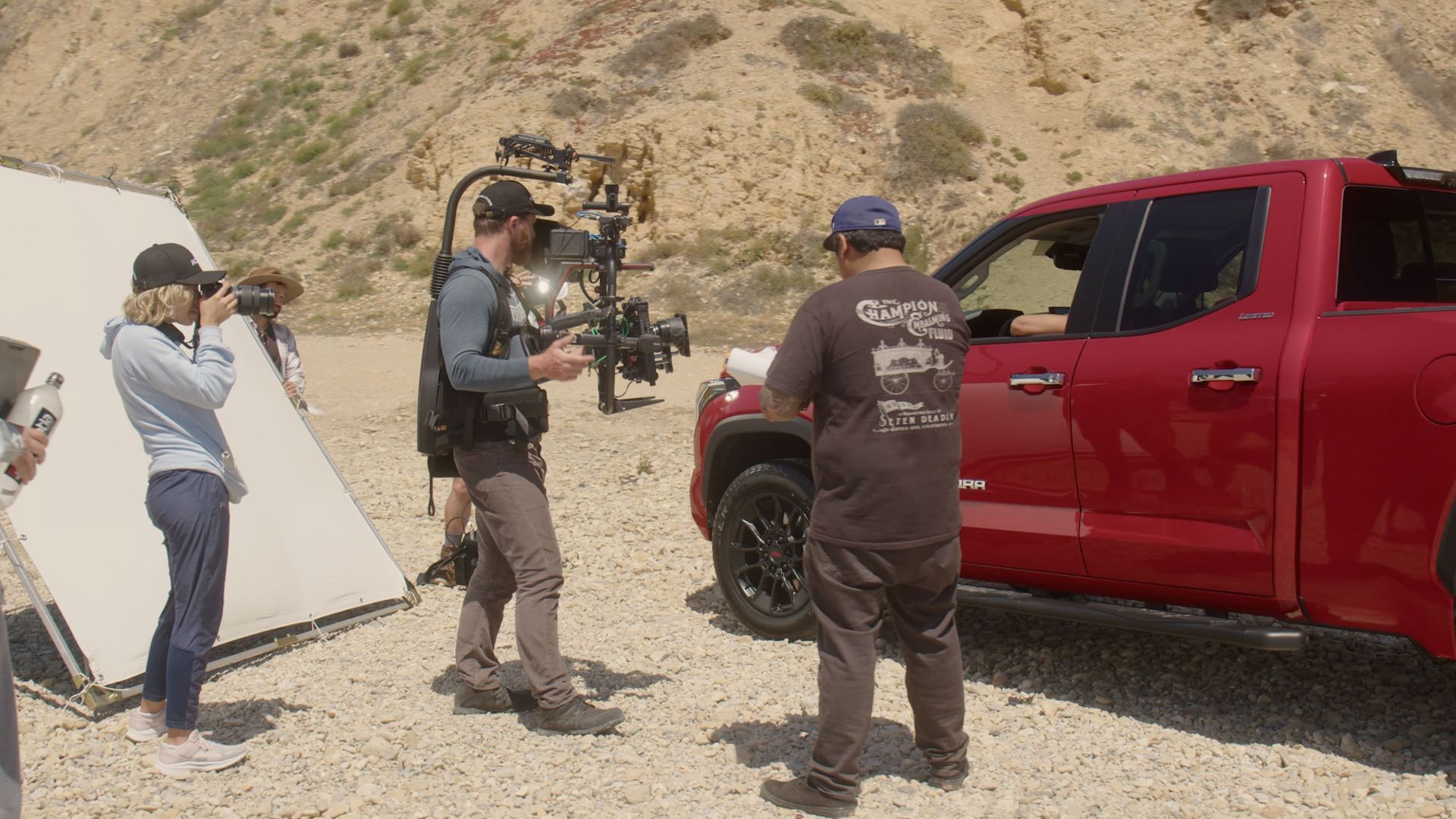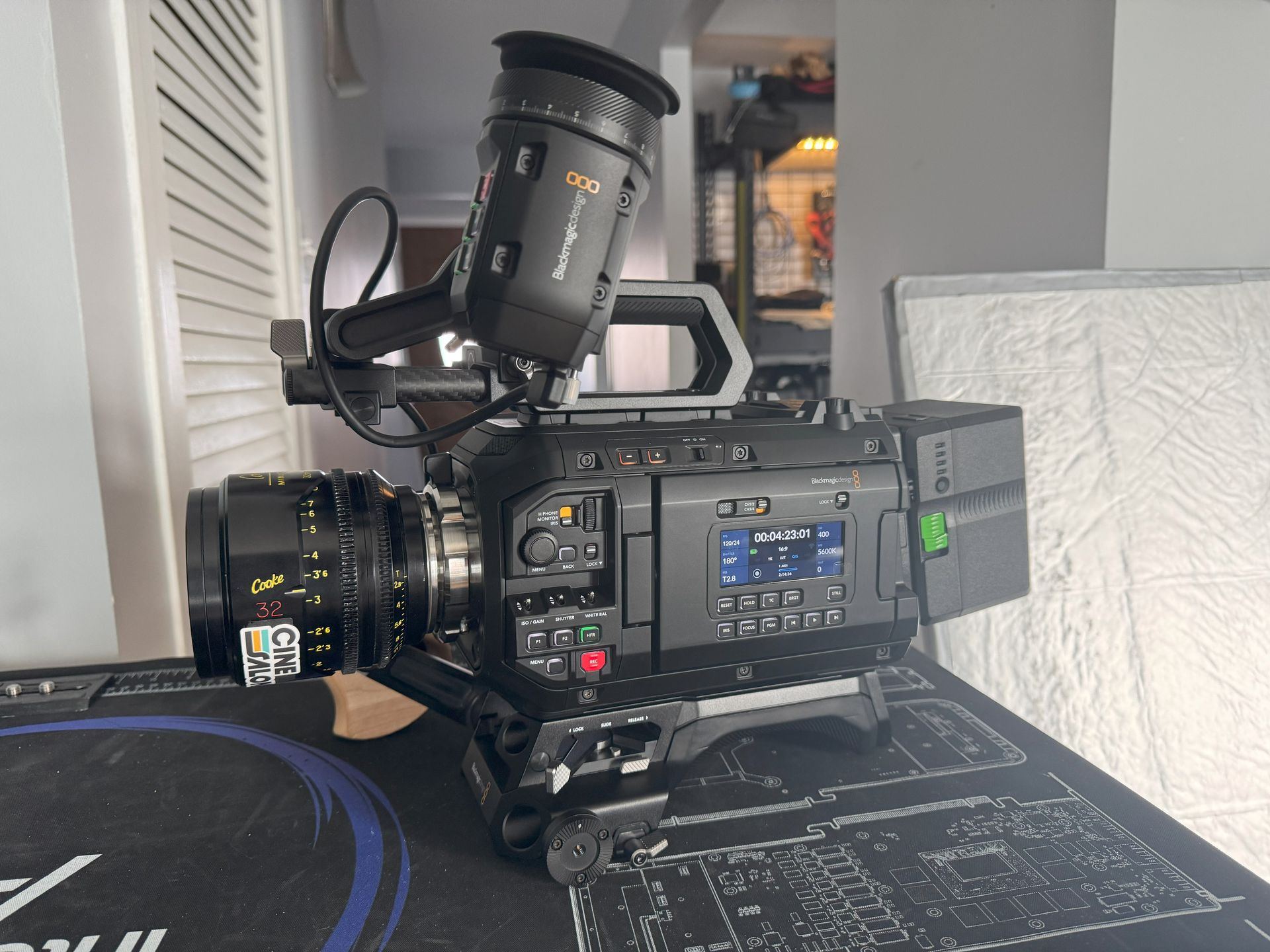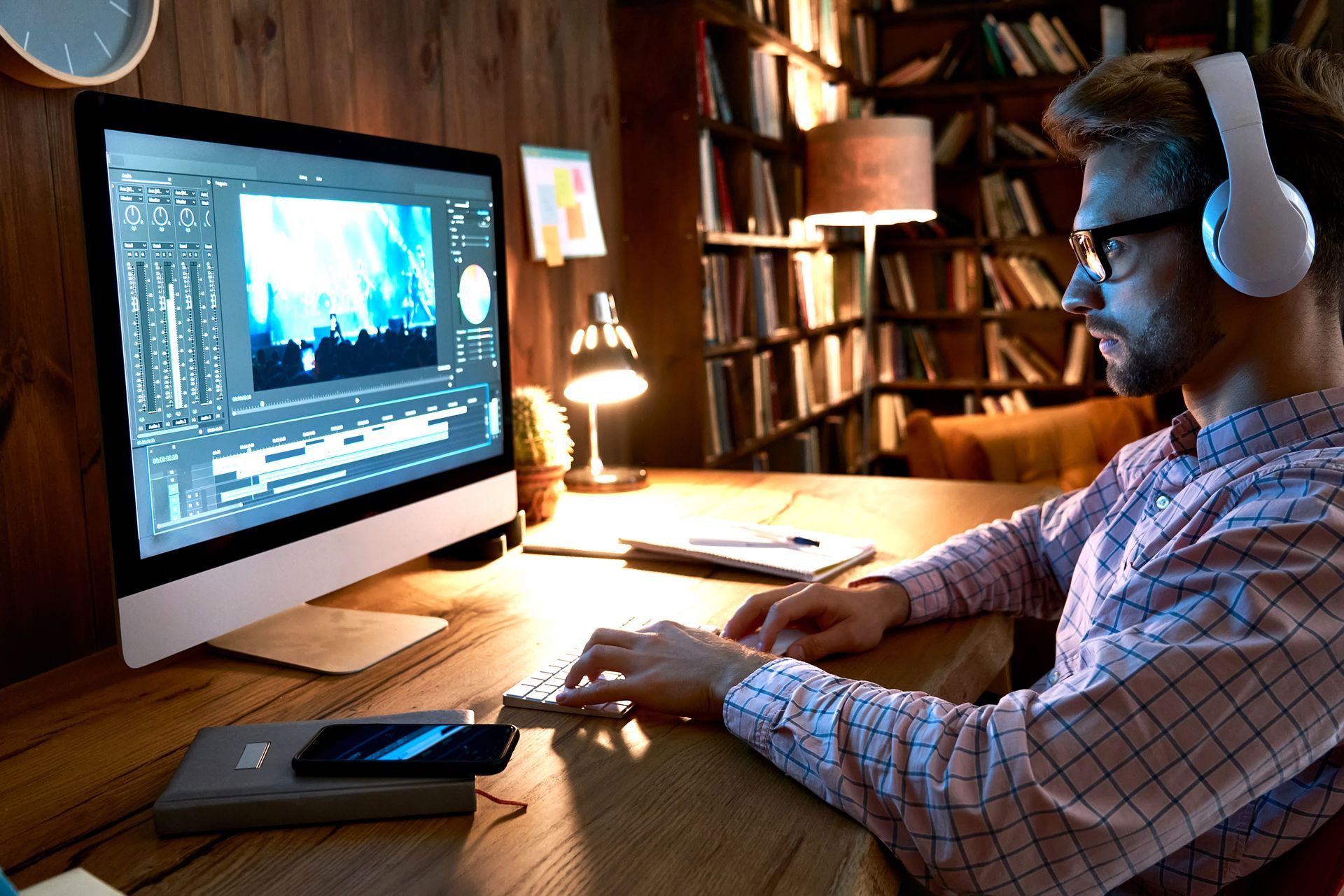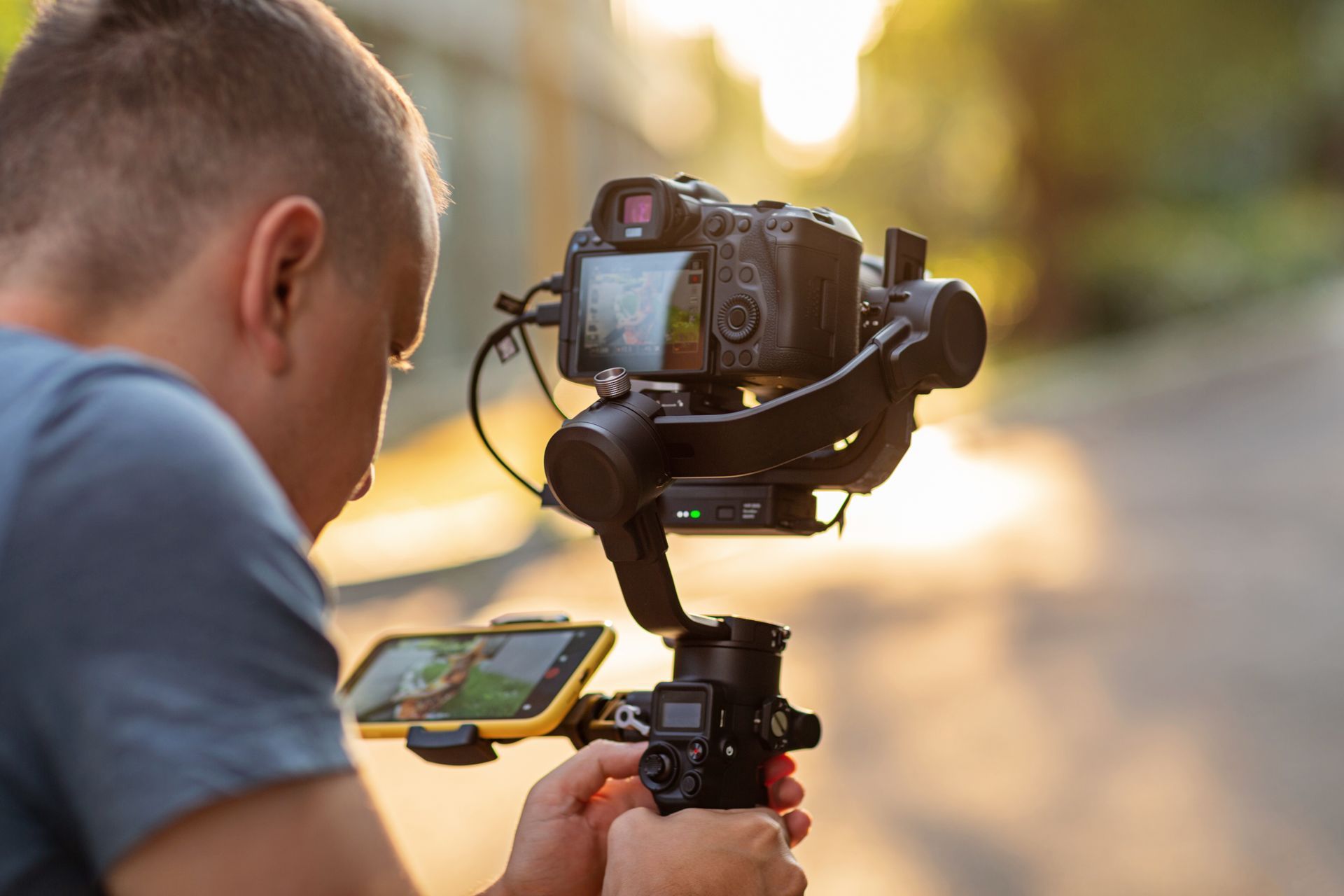As video content becomes increasingly popular, ensuring accessibility for all viewers has become more important. Closed captioning is a valuable tool that allows deaf and hard-of-hearing individuals to enjoy video content fully. It can also benefit non-native speakers, viewers in noisy environments, and those with certain learning disabilities.
We'll explore the various types of closed captioning, including offline and real-time options, burned-in captions, and subtitling. We'll also highlight each type's benefits and drawbacks so you can choose the best option for your specific needs. Continue reading to find out!
Types of Closed Captioning
There are several kinds of closed captioning. Each option has its unique features, benefits, and creative processes. Let us look at the different types of closed captioning and their uses.
1. Offline captioning
Offline captioning is the process of creating captions for pre-recorded video content. This type of captioning is done in advance. This allows for careful crafting and Editing of the captions to ensure accuracy and readability.
Offline captions are used in TV shows, movies, and other pre-recorded video content. They can also be created in many languages to cater to a diverse audience.
Process of creating offline captions
Offline captioning involves several steps in creating captions for pre-recorded content. Here's a breakdown of the process;
● Transcription
The first step in offline captioning is transcribing the video's audio content. This involves a professional transcriptionist listening to the audio and creating a text document of the spoken words.
● Time-Coding
Once the Transcription is complete, the text is time-coded to match the audio. This is important to ensure that the video follows up with the captions as it should. Time coding involves identifying each caption's start and end times and synchronizing the text to the audio.
● Formatting
The text is then formatted into readable captions, typically using specific captioning software. This involves adding line breaks, adjusting the font size and color, and positioning the captions on the screen to fit.
● Editing
After Formatting, the captions are edited for accuracy and readability. A professional caption editor reviews the captions for spelling and grammar errors. The expert also ensures they are synchronized with the audio.
● Encoding
Once the captions are edited, they are encoded into the video file. This involves embedding the caption data into the video file to turn the captions on or off as needed.
● Testing
Finally, the video is tested to ensure that the captions display well on different platforms. These may include TVs, computers, mobile phones, and tablets. The testing process also involves checking for timing, Formatting, and positioning.
Benefits of using offline captioning
Offline captioning provides many benefits to both content creators and viewers alike. Here are some of the top advantages of using offline captioning;
1. Offline captions make pre-recorded content accessible to deaf and hard-of-hearing viewers. It also benefits non-native speakers and those with certain learning disabilities.
2. Offline captioning is often required by law, such as under the Americans with Disabilities Act (ADA) in the United States. It helps to ensure that content creators follow accessibility regulations.
3. As a matter of fact, adding captions to video content can increase viewer engagement. Captions can help viewers better understand the content and follow along with the video.
4. Captions can also improve search engine optimization (SEO) for video content. Search engines can now index captions available in your video and use them to improve search results.
5. Offline captioning can be done in many languages. This means you can tailor your video to any country of choice. This allows content creators to reach a wider, more diverse audience.
2. Live Captioning
Live captioning provides real-time captions for events such as webinars and live broadcasts. Unlike offline captioning, which is done post-production, live captioning requires a captioner to transcribe and display captions simultaneously with the spoken word.
It typically involves the services of a professional captioner who is trained in live captioning techniques. The expert has the necessary skills to keep up with the pace of the spoken word. But, the captioner utilizes specialized software and hardware. These may include stenography machines or voice recognition software. These allow for the transcription of the spoken word fast and accurately.
How live captioning works
Some of the most important steps involved in the process of live captioning include;
● Audio Feed
The audio feed is a crucial component of the live captioning process, as it is the source of the spoken word that the captioner will transcribe into text.
A dedicated phone line is one common method to send the audio feed directly from the event venue to the captioner. This method ensures a high-quality audio feed with minimal delays or interruptions.
● Display
The captions are then displayed on-screen or streamed in real time. This may happen through a separate screen or integrated into the video feed.
● Editing
The captioner may edit the captions as necessary for accuracy and clarity. The expert is to capture important information such as names, technical terms, and other details accurately.
Advantages of live captioning
Several benefits of Live captioning include;
1. Live captioning promotes inclusion by allowing individuals with hearing disabilities to participate in the event alongside other attendees fully.
2. Live captioning is performed in real-time, which ensures that the captions are accurate and up-to-date with the spoken word.
3. It provides clarity by highlighting important information, such as names, technical terms, and other details that may be difficult to hear or understand.
4. Live captioning helps improve spoken word comprehension, as viewers can read the captions while listening to the audio.
5. It is a convenient option, especially for non-native speakers or those in noisy environments.
3. Open Captioning
Open captioning is a type of closed captioning permanently embedded into the video and cannot be turned off. This type of captioning is typically used for pre-recorded content such as movies, television shows, and online videos.
This type of captioning is added to the video during the post-production process, and the captions are burned into the video so that they cannot be removed or turned off. Open captions are always visible and do not require additional equipment or software to be viewed.
How open captioning is different from closed captioning
Though open and closed captioning show similarities, there's a thin line between them. Here are some ways in which open captioning differs from closed captioning;
● Permanence
Open captions are permanently embedded into the video and cannot be turned off. On the other hand, closed captions can be turned on and off as needed by the viewer.
● Customization
Closed captions can be customized in font size, color, and positioning, while open captions cannot be customized in this way.
● Placement
Open captions are always placed at the bottom of the screen, while closed captions can be placed anywhere on the screen as desired.
● Audience
Open captions are visible to all viewers, while closed captions can be turned on and off by individual viewers who need them.
● Production
Open captions are added during the post-production process, while closed captions can be added during or after post-production.
● Flexibility
Closed captions are more flexible than open captions, as they can be turned on and off or customized as individual viewers need. On the other hand, open captions are a fixed part of the video and cannot be adjusted by the viewer anytime in the future.
Pros and cons of open captioning
Here are some pros and cons of open captioning;
Pros:
1. Provides an accessible viewing experience for all viewers, regardless of their hearing abilities.
2. It eliminates the need for viewers to turn on closed captions manually.
3. Can improve overall comprehension of the video content by providing visual aid.
4. Useful for videos viewed in noisy environments, where audio may be difficult to hear.
5. It offers a simplified approach to captioning, as no other technology is needed to view the captions.
Cons:
1. It can distract some viewers, especially those who do not require captions.
2. It May interfere with the visual design of the video content.
3. Font size, color, or positioning cannot be customized.
4. May be less accurate than closed captions, as they are not generated by specialized software.
5. Open captions cannot be removed or turned off once embedded in the video.
4. Automated Captioning
Automated captioning is a type of closed captioning, also known as machine-generated captioning. It involves using software or artificial intelligence (AI) to generate captions for video content automatically. Here are some important facts to know about automated captioning;
1. Automated captioning uses speech recognition technology to transcribe the spoken words in a video and display them as text on the screen.
2. The accuracy of automated captioning can vary depending on the audio quality and the speech patterns' complexity.
3. Automated captioning is typically faster and less expensive than manual captioning, making it an attractive option for those with limited budgets or tight timelines.
4. However, because of its reliance on AI and speech recognition, automated captioning may not always produce accurate or grammatically correct captions, leading to confusion and frustration for viewers.
5. Automated captioning is often used as a starting point for manual Editing and refinement to improve the overall quality and accuracy of the captions.
6. Automated captioning is becoming increasingly popular as advancements in AI and machine learning are improving the accuracy and reliability of the technology.
7. Some popular examples of automated captioning software include Google's YouTube automatic captioning feature and the AI-powered captioning tool from Rev.com.
How automated captioning works
● Speech Recognition
The first step in automated captioning is converting the spoken words in a video into text. This is done using speech recognition technology, which uses algorithms to analyze the audio and transcribe it into text.
● Natural Language Processing
Once the audio has been transcribed into text, the software uses natural language processing (NLP) algorithms to analyze the text and identify key phrases, sentence structures, and grammar rules.
● Caption Timing
In order to ensure that the captions appear on the screen at the appropriate time, the software must also include caption timing information. This is typically done by analyzing the audio waveform and aligning the captions with specific points in the audio.
● Caption Formatting
Once the text has been transcribed and timed, the software will also format the captions for display on the screen. This can include things like font size, color, and position.
● Editing and Refinement
While automated captioning can be a fast and efficient way to generate captions, it can be challenging. The simple reason is that it's artificial intelligence and cannot be completely reliable. As a result, many companies and organizations will use automated captioning as a starting point and then edit and refine the captions manually to improve accuracy and readability.
Popular automated captioning software
Some examples of automated captioning software that has gained wide popularity in the industry include;
● Google's Speech-to-Text API
This software uses machine learning technology to transcribe audio and video files into text. It can recognize over 120 languages and dialects.
● Otter.ai
This cloud-based software uses artificial intelligence to transcribe audio recordings, including live conversations and meetings. It can also identify different speakers and generate meeting summaries fast.
● Temi
This software uses advanced speech recognition algorithms to provide fast and accurate transcriptions of audio and video files. It also offers easy-to-use editing and formatting tools to make the captions more readable.
● Rev
This software provides both human and automated captioning services. The latter involves using the tech company's artificial intelligence to transcribe audio and video files quickly and accurately. This solution can transcribe audio with a fairly high degree of accuracy.
● Trint
Like those mentioned above, this software uses artificial intelligence to transcribe audio and video files into text. It features a friendly editor that allows users to edit and refine the captions as needed to fit their purpose.
5. Roll-Up Captions
Roll-up or scrolling captions are closed captioning that appear as a single line of text at the bottom of the screen and scroll horizontally as the dialogue progresses. This type of captioning is commonly used in live broadcasts, such as news programs and sports events.
Roll-up captions are created using specialized software that automatically adjusts the timing and position of the captions to keep up with the speed of the dialogue. The software also allows for the customization of the font style, size, and color of the captions.
How roll-up captions work
● Text is created and entered into the captioning software
The captioner listens to the audio and types the words into the captioning software. As they type, the words appear as a single line of text on the bottom of the screen.
● The captioning software formats the text into a scroll
As new words are typed, the captioning software formats the text into a scroll so that the new words appear at the bottom of the screen, pushing the older text up. This gives the impression of the text "rolling up" the screen.
● The captioner times the scroll to match the audio
The captioner must time the scroll to match the pace of the audio so that the text stays in sync with the spoken words. This can be a challenging task, especially if the speaker is talking quickly or if there are multiple speakers.
● The finished captions are sent to the broadcast
Once the captioner has completed the captions, they are sent to the broadcast, where they are added to the program and transmitted to viewers.
Advantages and disadvantages of roll-up captions
Advantages
1. Takes up less screen space than other captioning types, meaning less video obstruction.
2. Provides viewers with the ability to read captions at their own pace.
3. Ideal for content with a lot of dialogue or fast-paced scenes.
4. Easier and less expensive to produce compared to open or closed captioning.
Disadvantages
1. It May be difficult for viewers with visual impairments to read due to the small font size and scrolling speed.
2. It Can be challenging to keep up with the audio if the content has a lot of sudden changes or overlapping dialogue.
3. Less accurate than other captioning types, as there is a higher likelihood of errors and typos.
6. Pop-On Captions
Pop-On captions are another closed caption commonly used in movies and other video content. Unlike roll-up captions, pop-on captions display each line of text in a single block or "pop-up" box. Pop-on captions are typically used for pre-recorded videos rather than live broadcasts.
How pop-on captions work
● Creation of Caption File
First, the captioning provider receives the video and creates a caption file that matches the timing and content of the audio.
A caption file is a text-based document that contains the time-stamped transcript of a video's dialogue. Caption files are used in closed captioning to provide synchronized text that appears on the screen simultaneously with the audio. Different caption file formats, such as .srt, .vtt, and .dfxp, can be used for different platforms and devices.
● Timing and Placement
The caption file is then used to display captions in sync with the audio during playback. Pop-on captions are usually displayed at the bottom of the screen, but their placement can vary depending on the content and preference of the viewer. Some viewers might prefer the captions placed at the bottom of the screen, while others may prefer them to be displayed at the top or sides of the screen.
For instance, in news programs, pop-on captions might be displayed at the bottom of the screen, while in movies or TV shows, they might be displayed closer to the center or top of the screen.
● On/Off Functionality
The viewer can turn pop-on captions on or off depending on their preference. This is usually done through the device's settings or menu to play the video.
● Styling and Formatting
Pop-on captions can also be styled and formatted in different ways, including font, size, color, and background. These options can be adjusted to enhance the viewing experience for people with visual impairments or to match the video's visual style.
● Delivery
Pop-on captions can be delivered through various methods, including DVD, broadcast, streaming video, or online content platforms.
Advantages and disadvantages of pop-on captions
Advantages
1. Pop-on captions provide a more visually appealing format.
2. Can be used to emphasize specific words or phrases.
3. Easier to read for some viewers with cognitive or visual disabilities.
4. Can convey sound effects or other non-speech audio.
Disadvantages
1. May cover up important visual content on the screen.
2. Can be distracting or overwhelming for some viewers.
3. Limited in terms of the amount of text that can be displayed at one time.
4. Require more time and effort to create compared to other types of captions.
7. Multilanguage Subtitling
Multilanguage subtitling, also known as multilingual subtitling or closed captioning, refers to adding subtitles or captions in multiple languages to a video or audio content. This is particularly useful for international audiences or people who are multilingual or prefer to consume content in a language other than the original.
Multilanguage subtitling involves creating separate subtitle or caption files for each language and synchronizing them with the audio or video content. These files are typically saved in a standardized format such as SubRip (.srt), Timed Text Markup Language (.ttml), or WebVTT (.vtt), among others. The viewer can then select the language of their choice from the settings or options menu on their device.
There are several ways to create multilanguage subtitles. These include manual Transcription and translation, machine translation, and hybrid methods that combine both. The chosen method will depend on budget, time constraints, and accuracy requirements.
How multilanguage subtitling works
The following are the steps involved in creating multilanguage subtitles;
● Transcription
The first step in creating multilanguage subtitles is to transcribe the video's audio content into a written format. This is done by listening to the audio and writing down what is being said in the language spoken in the video.
● Translation
Once the audio has been transcribed, the written content is translated into the required languages. This step requires professional translators who are fluent in both the source language and the target languages.
● Timing
Once the translation is completed, the subtitles are timed to match the audio in the video. This is done by breaking the subtitles into smaller segments and ensuring that each segment appears on the screen for the appropriate duration.
● Localization
The subtitles are then localized to ensure they are culturally appropriate and accurate for the target audience. This step involves adapting the subtitles to suit the cultural nuances and preferences of the target language and region.
● Quality Control
The final step is to perform a quality check on the subtitles to ensure that they are error-free and accurately represent the content of the video in all languages without subtracting from the original information.
Advantages and disadvantages of multilanguage subtitling
Advantages
1. Provides access to a wider audience who speak different languages.
2. Helps to promote cultural diversity and understanding.
3. It can be cost-effective compared to dubbing.
4. Subtitles do not alter the original audio and preserve the authenticity of the content.
Disadvantages
1. Can be distracting to some viewers.
2. May take more time and effort to produce compared to single-language subtitles, which may mean more cost.
3. Not suitable for all types of content, such as live events or certain genres like comedy, where timing and delivery are crucial.
In conclusion
Needless to say, closed captioning has become an integral part of the media landscape. It ensures accessibility for all individuals, including those with hearing disabilities. The different types of closed captioning, such as offline, live, real-time, open, automated, roll-up, pop-on, and multilanguage subtitling, each offer unique advantages and disadvantages depending on the audience's needs.
Content creators, broadcasters, and businesses must consider their target audience and the type of content they create when choosing a closed captioning method. Of course, as technology advances, the landscape of closed captioning constantly evolves, and new methods are emerging. Hence, industry professionals must stay updated on the latest developments to ensure they provide the most effective closed captioning solutions possible.
We encourage you to explore the various options if you need closed captioning services. You can also contact a reputable captioning service provider to learn which type of closed captioning may suit your needs.

Get total clarity on your video marketing and paid media with our FREE comprehensive data audit.







